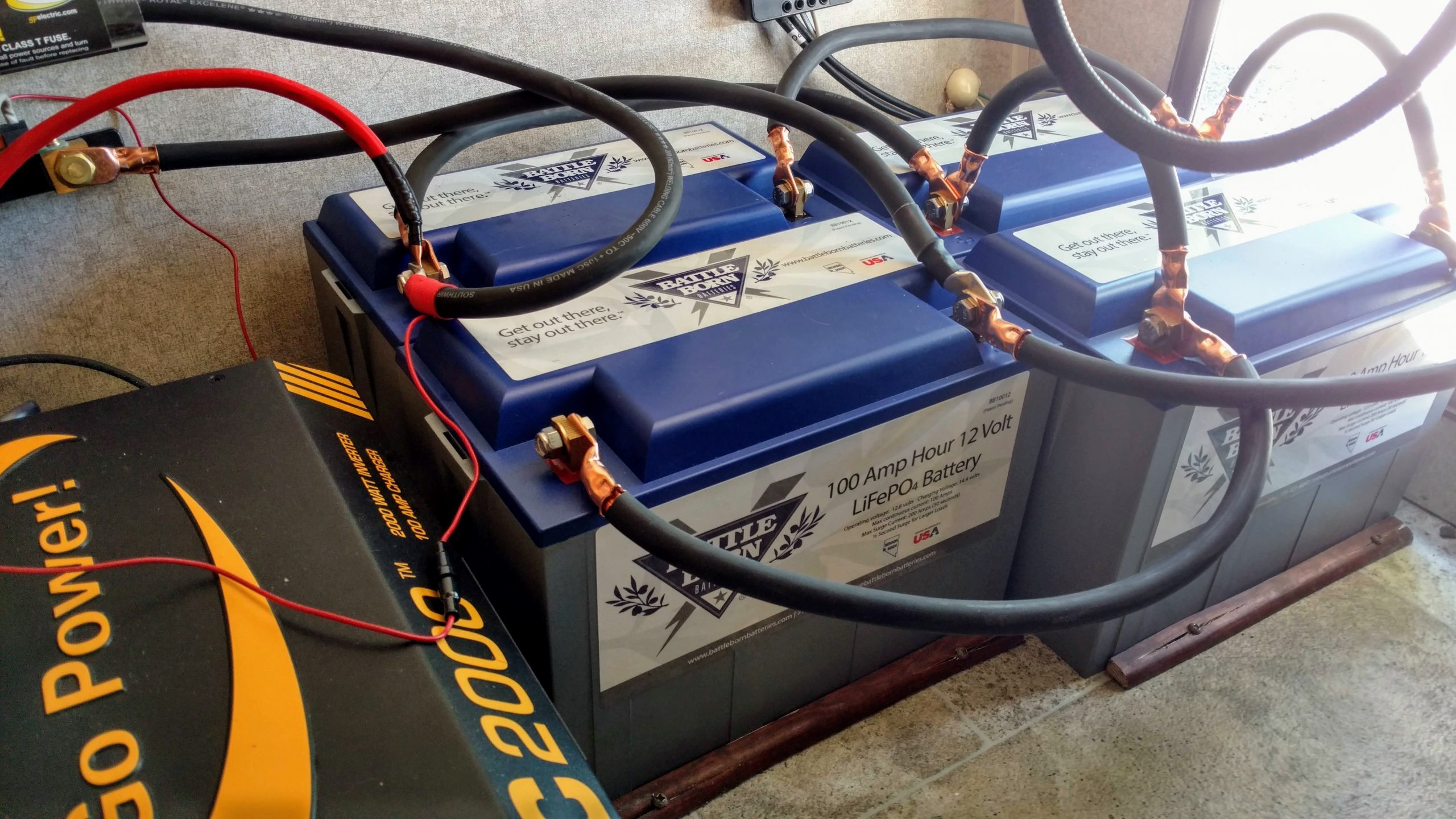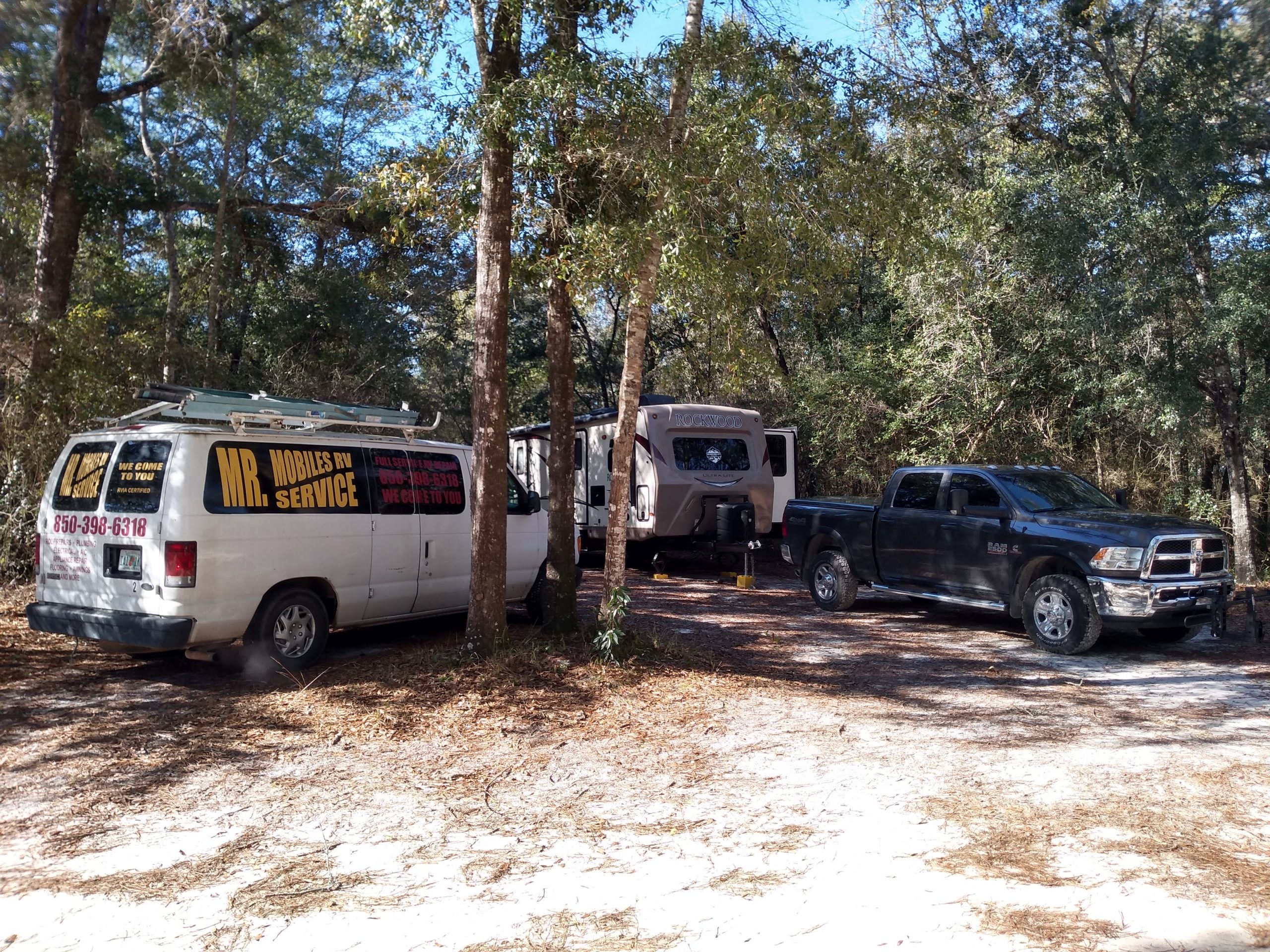
If you have followed us for awhile you know that we installed a Go Power! Elite solar kit in our RV in March of 2018. We had spent a week boondocking with our friends Fate Unbound at Lake Mead near Las Vegas. They showed us the joy of it and we instantly knew that was the type of camping we wanted to do. So we ordered and installed the kit before leaving Lake Mead. We also upgraded from one 12v deep cycle battery to two 6v deep cycle batteries for a bit more amp hours. For those not in the know, amp hours are the rated power for batteries. If you have a 100ah battery you could, as an example, draw 20amps for 5 hours before it would be dead. Now, in the real world, it’s not that simple. For one, you can only draw a lead acid battery down to around 50%. So you actually only have 50amp hours available in the example above. The power drain is also not linear so while the math says one thing, the reality is often slightly different. So what that really means is that you don’t have as much power as you think, especially under larger loads. Regardless, the solar and upgraded batteries did the trick for us for several months. Only issue was really needing to conserve since Misty was working through the inverter and powering a large screen monitor and laptop. We couldn’t be as “willy nilly” with our power as we would have liked.

So in June of 2018, while boondocking in Idaho near Yellowstone National Park, we decided to take the plunge and spend a large amount of money on lithium batteries. We opted for four 100ah batteries from Battle Born. Again, if you follow us regularly, you also know that’s when I had my heart attack while installing said batteries. Because of that event, we didn’t have the chance to really give our solar and new batteries a workout for many months to follow. Finally, on Jan. 1, 2019 we were camping in Everglades National Park in southern Florida and able to give the system its first test. It passed but with caveats.
The first issue showed itself while in our first spot in the campground. The side of the RV with the solar panels was not facing south to make the most of the sun (in the winter months the sun is much lower in the horizon which means you need to face the panels in that direction) but the biggest issue was that we were getting a lot of afternoon shade from trees. When using solar, shade is your enemy! We also had several cloudy days in a row. So add these things together and we weren’t producing as much energy as we were using. Again, Misty works so she is often using the inverter to power her computer for many hours a day. The only thing saving us here was that we did have lithium batteries now and they provide a lot of power for a long time. Still, we needed to do something. Fortunately, a better campsite opened up that was in the full sun and would allow us to face the RV in the right direction to get the most out of our solar. This did the trick and the rest of the time there we didn’t have much energy issues.
What it did do was teach us that while we have a lot of battery power available to us, 340w of roof power plus an additional 105w of portable solar power wasn’t enough to get us out of a big deficit. It took several days of using as little power as possible and full sun days to get us back to near 100%.
Enter issue number two. As mentioned above, we got back to near 100% but were never reaching 100%. This puzzled me. What puzzled me even more was that none of the devices we have in the RV that read voltage ever state the exact same numbers. We have a solar charge controller, a battery monitor and our inverter that all tell us voltage. The most accurate should be the Victron battery monitor. It has a shunt that all of our DC power flows through. The shunt can tell current out and current into the batteries. But what do you believe when your controller says 14.4v, your monitor tells you 13.4v and your inverter tells you 13.5v? Well, we are still sorting out this mess today.
We are considering adding additional solar panels to help bring in a bit more power. We also may need to get a slightly better and smarter MPPT solar charge controller to better manage what power we do have. While researching all of this I ran across a DIY solar group on Facebook so I joined. I learned quickly that MPPT controllers work best when your panels are hooked up in series. Ours are currently hooked up in parallel. The reasoning is that MPPT controllers work best with lots of voltage that they convert into additional current (amps). When hooked up that way the voltage doubles but the amps remain the same. Parallel gets you double the amps but the same voltage.
I decided to run an experiment and switch our panels over to series since it is a very simple wiring job. I had looked online to confirm our Blue Sky Energy Solar Boost 3000i MPPT controller could handle the voltage. Manual stated 40v with 50v max. Our two panels in series would generate around 44v so thought I was good to go. Nope. Within just a few minutes the bright, southern Texas sun came out and our controller reset itself and rebooted. Ok, strange, but it continued to work. We were seeing more amps coming in and so everything looked promising. Then it reset itself once again so I knew something wasn’t right. I called Blue Sky Energy to ask.
I got Ryan on the phone and he was very knowledgeable and helpful. Our issue was that the real max voltage of our unit is 40v, not 50v so we were risking damaging our charge controller. I ended up switching back to parallel. While stepping him through our system, however, he immediately didn’t like the voltage differences between our devices. Stepping him through it, he said our problem was very likely the blade fuse between the controller and the batteries. He said the holders are very cheaply made and often can’t handle the large current. They are a huge resistance point. What he didn’t know was that the holder also has very small gauge wiring. It came with our solar kit but I knew when installing it that it could be an issue. I even had ordered some higher current breaker type devices to replace it but hadn’t installed them yet. I also need to run the wiring directly from the controller to the battery bank. It currently ties into the batteries at the rear of our fuse/breaker box so it has a LOT of wire to go through before landing at our batteries.
So, that’s my first step in fixing our solar gremlins. I honestly think that one bottleneck may be a large part of our energy problems. We never reach 14.4v to the batteries while on solar power due to all that resistance. So our batteries never fully get charged. The cells in lithium batteries need to be synced once in a while and they do that by reaching 14.4v for around 30 minutes. So I’m going to install some larger wires from our controller, put in the larger breaker and hook directly to the battery bank. We’ll see what that does for us before making any further changes to our system.
We aren’t huge energy hogs. We have minimal energy needs, most being computer usage but it would be nice to be able to watch TV at night and things like and not be concerned if we’ll get the energy back the next day. We shall see!






Pretty cool stuff! We are net zero at home with 36 panels. I am considering something for our boat. From what I’ve read the big loser for you is the loss converting your DC Panels to A/C. Most monitor and computers really run on DC. So your really converting to A/C then your computer is converting back to DC. Losing twice. If you could run your computer and monitor directly from DC it would be much much more efficient. I know laptops and such will run from a battery. I think there 15-20 volts or something like that.
Maybe your already doing this, feel free to correct me if something doesn’t make sense.
You know Scott, I’ve wondered about running the computer and monitor directly off battery power. As you stated, they run off DC anyway so I was aware of the stupid multiple conversions. What I don’t know is how exactly to do that. Are there replacement cords that would somehow tie directly into the DC power? I’ll have to do some more research but when I looked before I didn’t run across anything. Thanks!!
I bought one of these for my laptop.
https://www.amazon.com/gp/product/B00ARP15PC/ref=ppx_yo_dt_b_search_asin_title?ie=UTF8&psc=1
My laptop is a system 76 running ubuntu. It wasn’t listed on any of the plugs pwr+ sold, so I emailed them directly, told them my laptops power needs and the size of the plug. They recommended the product above for my laptop.
Charges up well using either the 12v plug in my truck or in my trailer. I’ve only had it a few months, but I’m encouraged so far.